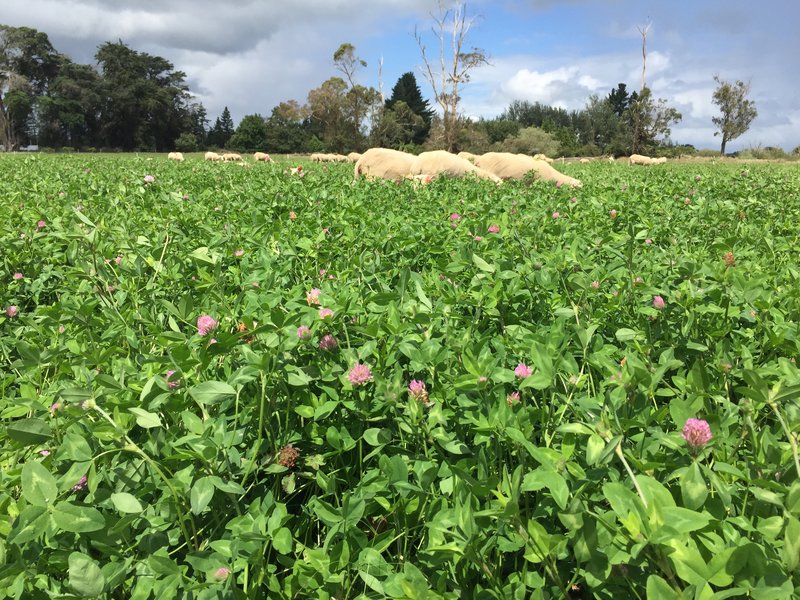Bred for grazing – new red clover available for autumn
If you’re interested in the potential animal performance and nitrogen fixation gains of including red clover in your pasture mix this season, take a close look at our new multi-stemmed red clover cultivar Morrow.
Morrow comes from a tough family. Most red clovers would not last long under intensive rotational dairy grazing on light, summer dry North Island soils. But Morrow’s parents did. Over time, they adapted, survived and stood out as good growers, even after drought.
We selected the best of these genetics for improved yield, persistence and flowering to create a multi-stemmed red clover for good production and very good persistence under grazing.
For 8 years, Morrow has been a standout in our trials, with excellent spring and summer growth.
Red clover’s biggest drawback has always been limited persistence under grazing. Morrow’s improved grazing tolerance – helped by its semi-prostrate form and high stem count – means it will keep boosting production year on year.
Like all red clovers Morrow will persist best on free-draining soils under a longer summer grazing round.
It has topped our plant density trials, which measure how many red clover plants are left after 2 years in grazed trials.
High ME and high DM together create ideal late spring and summer grazing when the feed quality of grasses starts to drop off in summer.
In addition, Morrow fixes its own nitrogen, feeding it naturally into pasture systems in a slow and continual way. This will be ever more important to provide N on farm, as fertiliser comes under increasing environmental scrutiny.
Morrow can fix over 200 kg N/ha per year, based on its yield (about 25 kg N/ha per tonne of DM grown).
Another important benefit of red clover is clover root weevil tolerance, helping provide species diversity and extra legume content in your pasture.


